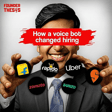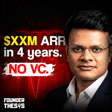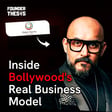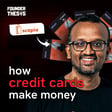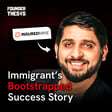
D2C to IPO | Kannan Sitaram on Fireside Ventures’ scaling playbooks
How did V.S. Kannan Sitaram turn early D2C bets like Mamaearth, boAt and Yogabar into IPO/M&A outcomes—while helping build Fireside Ventures into India’s leading consumer VC? In this episode, we dive into the operator-to-investor playbook powering India’s next wave of iconic consumer brands.
From Dabur COO to co-founder at Fireside Ventures, Kannan breaks down how to find PMF in consumer, why category > product, and what it really takes to scale D2C brands in India. We unpack Fireside’s thesis on premiumisation and health, the omnichannel math behind CAC→LTV, and why manufacturing can be a real moat. Expect candid learnings from portfolio journeys (Mamaearth IPO, Yogabar→ITC), boardroom discipline, and working with platforms like Amazon, Flipkart, Meta and Google. If you’re building or investing in consumer brands in India’s funding winter, this is a masterclass in exits, governance, and durable growth.
• Building consumer PMF: insight-led category creation vs feature-led products
• Omnichannel economics: CAC control, retention cohorts, LTV, and offline ramp
• Manufacturing as a moat: quality, margins, innovation speed vs asset-light
• Funding winter tactics: capital efficiency, SKU focus, and unit economics
• Exit readiness: audit hygiene, supply chain, IPO/M&A timing (Mamaearth, Yogabar)
• India’s consumer decade: premiumisation, wellness, and brand-led scale
Subscribe to the Founder Thesis Podcast
Follow Akshay Datt on LinkedIn for exclusive content
Visit founderthesis.com for more founder stories
00:00 - Fireside Ventures: Operator to VC
04:30 - Thesis: India’s D2C Consumer Boom
10:10 - Finding PMF: Category > Product
16:45 - Omnichannel Economics: CAC to LTV
23:00 - Manufacturing as Moat in Consumer
29:40 - Funding Winter Tactics for D2C
36:15 - Exits: Mamaearth IPO, Yogabar M&A
42:50 - What’s Next: Premiumisation & Health
Tags: V.S. Kannan Sitaram, Fireside Ventures, consumer brands India, D2C India, D2C startups, venture capital India, funding winter India, omnichannel strategy India, CAC LTV playbook, Mamaearth IPO, boAt story India, Yogabar ITC acquisition, premiumisation India, health and wellness brands India, brand building India, supply chain manufacturing India, exit strategy IPO M&A, Founder Thesis podcast
#FounderThesis #KannanSitaram #FiresideVentures #D2C #ConsumerBrands #VentureCapital #IndiaStartups #FundingWinter #Omnichannel #Mamaearth #boAt #Yogabar #Premiumisation

